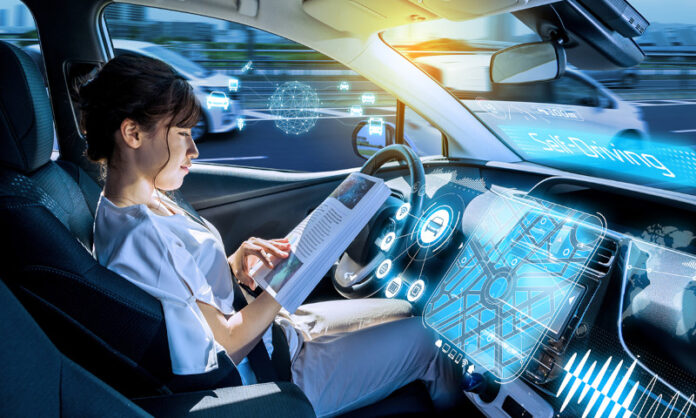In today’s consumer-driven landscape, where the likes of Amazon, shopify and Apple set the gold standard for exceptional service, the automotive industry is feeling the winds of change. Just as online platforms offer transparent prices, seamless experiences, and swift deliveries, customers now anticipate similar excellence in their automobiles.
The expectation isn’t merely about selling cars but crafting an entire mobility experience. As we delve into the intricacies of this shift, it becomes evident that the automotive industry is embracing transformative trends influenced by user-centric technologies. Opt for the most cost-effective third-party liability insurance policy through ubezpieczamy-auto.pl.
These trends promise evolution and a revolution in how we perceive and interact with cars in the years ahead. Four significant trends are at the heart of this transformation: cars becoming electric, more people sharing rides, adding extra safety features, and even making cars smart enough to drive themselves. These changes are like the magic ingredients in a recipe for how cars are made.
Here’s a cool fact: by the time we hit 2030, the market for special car gadgets and computer programs following these trends could be worth a mind-blowing $450 billion
1. Electrification: Transforming How Cars Run

Imagine cars running not on the usual engines but on something cleaner and greener. That’s what electrification is all about – a significant change in how our cars work. We increasingly see electric vehicles (EVs) zipping around, saying goodbye to the old gas engines. This shift is happening because making batteries for cars is getting cheaper; they last longer, and now, they can charge up faster and take you on longer drives.
This change isn’t just about being eco-friendly; it’s also changing the inside of cars. Traditional engines are making room for high-tech electronic systems in EVs. But, of course, every tremendous change comes with its challenges. The electronics in EVs have to deal with more substantial interference with higher currents in the vehicle, which can mess with how things work.
These systems make the cars cleaner and work better, but they also bring some tricky problems for the designers. The inside of these cars is like a busy city – lots of things happening at once. But sometimes, all this activity can cause issues, like when strong signals mess with how the electronic gadgets work.
That’s where tough-timing gadgets become heroes. They are like the conductors in a band, making sure all the different parts of the electronic systems in the cars work together smoothly. So, even with all the noise and challenges, these timing gadgets ensure electric cars run smoothly and reliably.
- Electric cars reduce pollution for a greener world.
- Advanced systems make electric vehicles run more smoothly.
- Robust timing gadgets ensure dependable performance in various conditions.
2. Shared Automobile Usage: Enhancing Reliability

Imagine cars not just being for one person but shared by many. That’s the idea behind shared automobile usage, where cars are used a lot more, almost 90% of the time, compared to single-user vehicles. While this sharing idea brings lots of benefits, it also means cars need to be super reliable.
Cars in sharing services go through a lot – they’re used often, and people get in and out frequently. This heavy use and constant movement put extra stress on the cars. They face tough conditions like high temperatures, vibrations, and shocks. To handle all this, cars need extra-strong parts to handle the wear and tear.
Now, here’s where timing devices become crucial. Today’s cars have up to 70 of these timing gadgets. They are like the traffic controllers inside the car’s electronics, making sure all the different systems work together. With shared usage models, cars are on the road for longer, demanding even more reliability from these timing devices. They play a vital role in keeping shared vehicles running safely and securely despite the constant hustle and bustle.
- Cars are on the road more frequently, reducing downtime.
- Lower cost per ride for both providers and users.
- Reduced need for new cars, promoting environmental friendliness.
3. Safety: Moving from Quiet to Action

When we talk about car safety, it’s not just about airbags and seatbelts anymore. The game is changing from sitting quietly to taking action. New rules, like ISO 26262 and SOTIF, ensure cars perform well in all kinds of conditions. The goal is big – zero accidents and injuries on the road.
Now, as safety becomes more active, cars get smarter. They have computers and sensors to watch for danger and prevent accidents. But here’s the catch – cars need to communicate quickly and flawlessly as they become high-tech superheroes. Imagine a car stopping suddenly because it senses danger; it needs to tell other parts of the vehicle instantly.
This is where timing devices step in. They are like traffic managers, ensuring all communication happens at the right time. In a world where safety is more than just sitting tight, these timing devices play a key role. They make sure your car’s smart safety systems work together seamlessly, keeping you safe on the road.
- Advanced safety systems detect and respond to dangers proactively.
- Adherence to safety standards ensures standardized and reliable safety.
- Precision timing devices enable fast and accurate communication between safety systems.
4. Driving Automation: Navigating the Data Deluge

Cars are driving themselves, getting smarter every day. That’s driving automation, a mega trend in the car world. While we’re still there, the journey is moving fast. As cars become more like robots on wheels, they generate an incredible amount of data – over 20 terabytes per hour!
Handling this data explosion is like managing a super busy traffic junction. It needs quick communication, tons of computing power (like having a super-fast brain), and, most importantly, perfect timing.
This is where precision timing devices become the unsung heroes. They are like the conductors in a symphony, ensuring all the data from different parts of the car seamlessly plays together. Whether it’s sensors talking to computers or the car making decisions, everything must happen at the right time.
In the world of driving automation, where cars are becoming smart enough to take the wheel, timing devices are the secret sauce that makes it all work. They ensure that the incredible amount of data generated is managed, processed, and acted upon with the precision needed for safe and efficient autonomous driving.
- Automation relies on precise timing for quick, reliable decision-making.
- Precision timing ensures seamless coordination in data processing.
- Timely communication between systems enables effective autonomous driving.
The transformation is undeniable as we race towards an era of groundbreaking automotive advancements. Electrification, shared usage, advanced safety, and autonomous driving are the trailblazers shaping the future of our cars. Amidst these innovations, precision timing emerges as the unsung hero, the driving force ensuring seamless and secure operations. Moving from old-school clock tech to the smart precision of MEMS technology, automakers are not just adapting; they’re strategically investing in safer, more reliable automotive systems.





![Calgary’s Hottest Neighborhoods for Luxury Homebuyers [2024]](https://thewashingtonote.com/wp-content/uploads/2024/04/Calgary-324x160.png)



